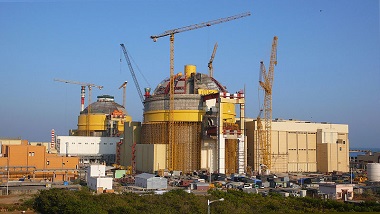Look Who’s Minting Off Nuclear Power, Hint: It’s The Government

Nuclear power plants are being mothballed in many parts of the world, a trend triggered by the Fukushima disaster in Japan. Not just Japan but even countries like Germany have set aggressive targets to reduce their dependence on nuclear power. Germany, for instance, is planning to shut all its 17 nuclear power plants by 2022.
India is one among few countries where nuclear power generation capacity is still being added and aggressively so. Moreover, as this report will point out, nuclear power plants are also earning handsome returns for its owner, the Government of India.
The state-owned Nuclear Power Corporation of India (NPCIL) recently commissioned a 1,000 MW nuclear power plant in Kudankulam at the southern most tip of the country. At last count, five more plants were on the anvil, including one on the ecologically sensitive west coast of India.
India had a total installed power capacity of 2,25,793 MW at the end of June 30, 2013. Of this, nuclear power accounted for 4,780 MW. The 20 nuclear reactors across the country are run by the NPCIL, which technically reports to the Department of Atomic Energy.
The Government has set a target of 5,300 MWcapacity addition for NPCIL during the 12th Plan (2012-17). That would be about 4.5% of the total capacity addition of 1,18,537 MW in the country by 2017.
Let us now look at the financials of NPCIL for the last 5 years:
So, the company has increased its income by more than 100% in 4 years and its profit after tax by 376% in the period under review. Earnings per share has zoomed from Rs 44 in 2008-09 to Rs 207 in 2012-13 – an increase of 370%!
NPCIL is in the process of operationalising the Kudankulam plant in Tamil Nadu, which will be India’s largest single power unit (2x1,000 MWe). Six reactors with an aggregate capacity of 4,800 MW are under various stages of construction and commissioning.
The initial project cost of the Kudankulam unit was estimated at Rs 13,171 crore, which had escalated to Rs 17,270 crore at the end of December 2012. With the initial estimate, the per unit cost was estimated at Rs 2.50, which would have obviously gone higher with higher costs.
As per Central Electricity Authority, the tariff of different plants of NPCIL varies between 92 paise and Rs 3.40 per KWh.
Power Minister Jyotiraditya Scindia, while answering a question in the Lok Sabha recently, said the weighted average rate of sale of power from nuclear plants in 2011-12 was Rs 2.53/kWh.
NTPC, the largest coal-based power producer in the country, had total installed capacity of 41,184 MW at the end of 2012-13 with a capital employed of Rs 84,419 crore. And the average cost of tariff for 2012-13 was Rs 2.96/kWh.
While NTPC had a debt-equity ratio (explained as a ratio of total borrowings by shareholder equity) of 0.72, NPCIL had a lower debt-equity ratio of 0.61. NPCIL had total long-term borrowings of Rs 15,160 crore at the end of March 31, 2013, an increase of only 5% (Rs 706 crore) from Rs 14,454 crore at the end of March 31, 2012.
NTPC, on the other hand, has seen its borrowings increase from Rs 50,279 crore in 2011-12 to Rs 58,146 crore at the end of 2012-13.
Let us now look at capital cost: the cost of thermal generation projects like NTPC's plants across the country is estimated at Rs 6 crore per MW while that of nuclear plants, as run by NPCIL, would be around Rs 10 crore per MW.
We also tried to see how one could value India’s nuclear industry, or for that matter NPCIL, which generated a profit of Rs 2,100 crore on sales of Rs 7,900 crore in 2012-13?
Going by international standards, the benchmark could be the French nuclear powerhouse Areva, which is valued around 7 billion euros on income of around 9 billion euros.
The other comparison could be the US-based General Electric (GE) with a market cap of $272 billion on sales of $144 billion. GE, however, is a conglomerate and nuclear business accounts for only about $1 billion of less than 1% of its total revenue.
If the multiple we use is the power industry average of 10, the stock of NPCIL could be valued around Rs 2,070.
The total equity paid-up capital of NPCIL is Rs 10,174 crore (i.e. 10.174 crore shares of Rs 1,000 each). So, NPCIL could be valued around Rs 21,060 crore.
Another possible way of valuation: NTPC with sales of over Rs 64,000 crore at the end of March 2013 is valued at over Rs 115,000 crore i.e. a market cap/sales ratio of 115,000/64,000 = 1.79. Applying the same logic, NPCIL with sales of nearly Rs 8,000 crore could be valued around Rs 15,000 crore.
Correction: 19 December: This article wrongly implied a radiation-led death toll number in the Fukushima Disaster in March 2011. There are no known deaths from radiation. The line was instead meant to refer to the over 15,000 deaths attributed to the earthquake and tsunami that hit Japan that also hit the nuclear plants.


